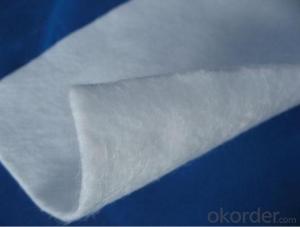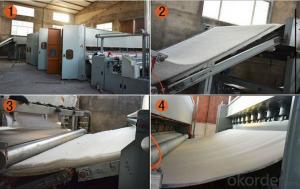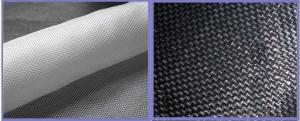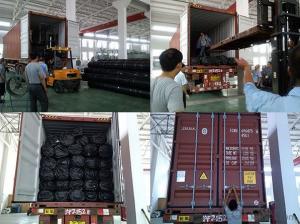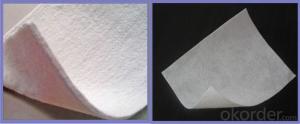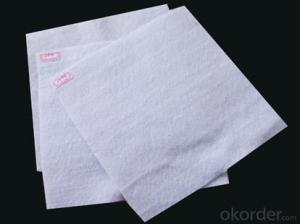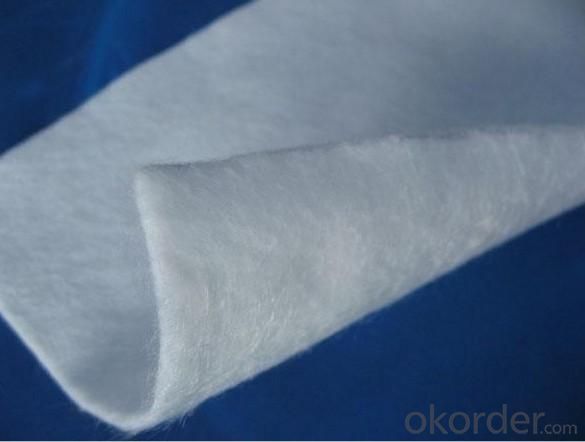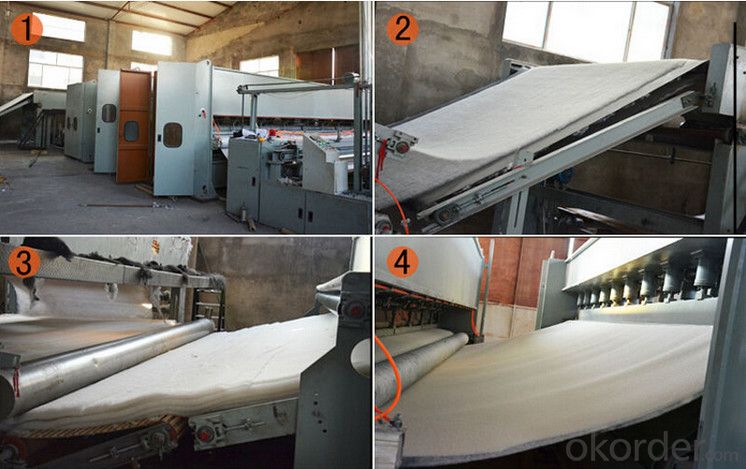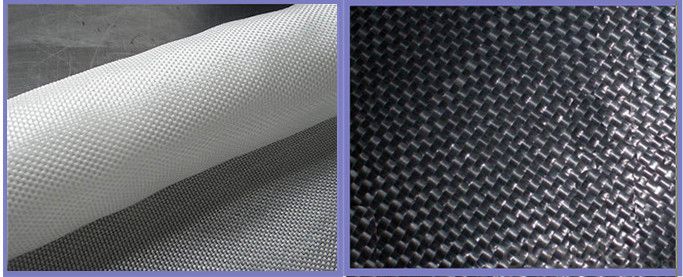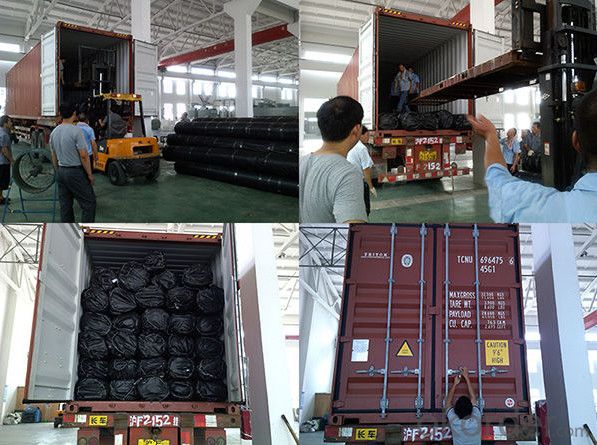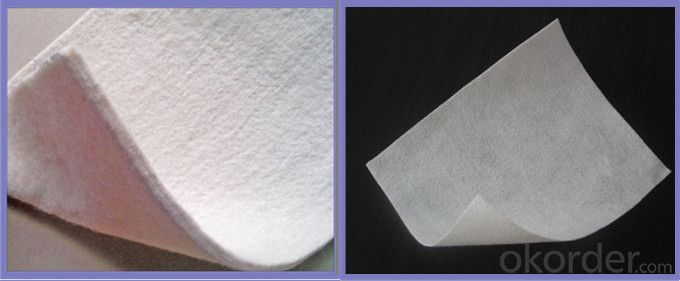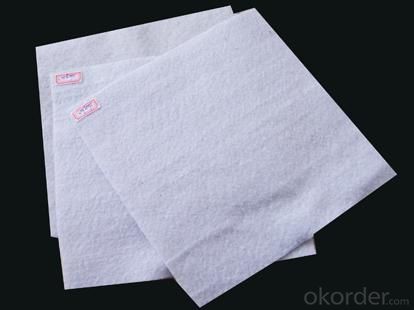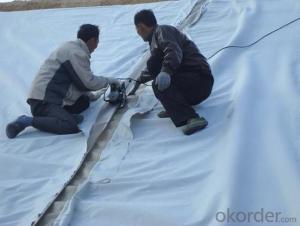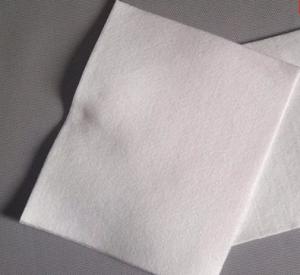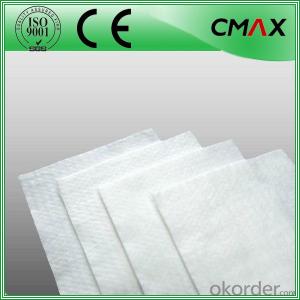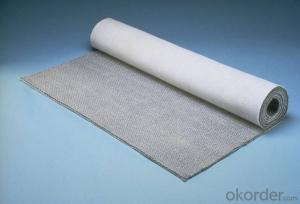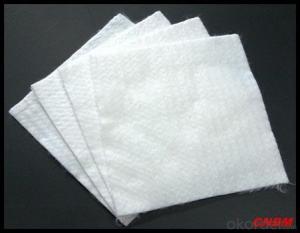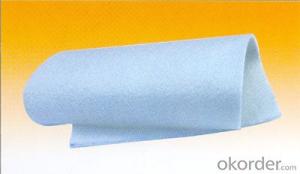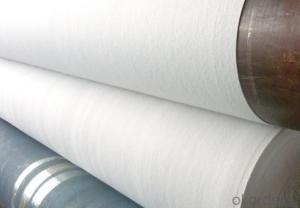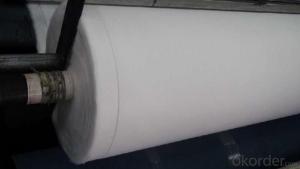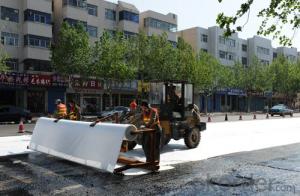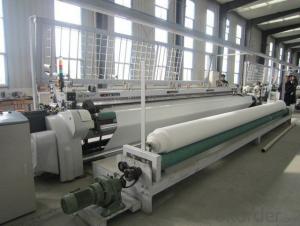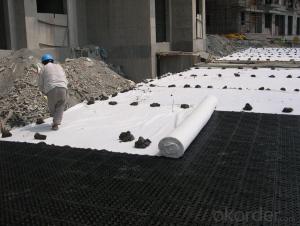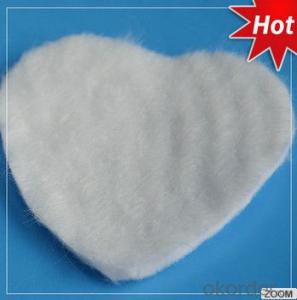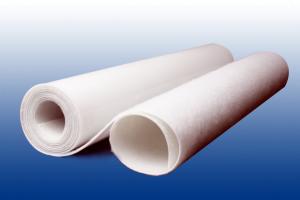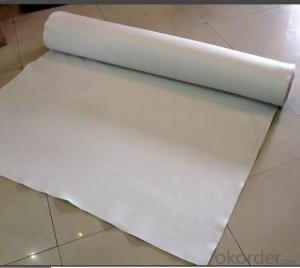Membrana Geotextil Pet 300 Needle Punched Nonwoven Geotextiles for Railway Construction
- Loading Port:
- Qingdao
- Payment Terms:
- TT OR LC
- Min Order Qty:
- 20000 m²
- Supply Capability:
- 1500000 m²/month
OKorder Service Pledge
OKorder Financial Service
You Might Also Like
Specifications of Needle Punched Nonwoven Geotextiles Used for River Construction:
-Reinforced filtering road geotextile
-quality:good quality
-strength:high strength
-tencity:well
-packagel:woven bags
TDS of Needle Punched Nonwoven Geotextiles Used for River Construction:
Item | Art No. | CMAX030101 | CMAX030102 | CMAX030103 | CMAX030104 | CMAX030105 | CMAX030106 | CMAX030107 | CMAX030108 | CMAX030109 | CMAXPLB030110 | CMAX030111 |
Unit weight, g/m2 | 100 | 150 | 200 | 250 | 300 | 350 | 400 | 450 | 500 | 600 | 800 | |
Weight tolerance, % | -8 | -8 | -8 | -8 | -7 | -7 | -7 | -7 | -6 | -6 | -6 | |
Thickness, ≥mm | 0.9 | 1.3 | 1.7 | 2.1 | 2.4 | 2.7 | 3.0 | 3.3 | 3.6 | 4.1 | 5.0 | |
Break strength, ≥kN/m | 2.5 | 4.5 | 6.5 | 8.0 | 9.5 | 11.0 | 12.5 | 14.0 | 16.0 | 19.0 | 25.0 | |
CBR burst strength, ≥kN | 0.3 | 0.6 | 0.9 | 1.2 | 1.5 | 1.8 | 2.1 | 2.4 | 2.7 | 3.2 | 4.0 | |
Tear strength, ≥kN | 0.08 | 0.12 | 0.16 | 0.20 | 0.24 | 0.28 | 0.33 | 0.38 | 0.42 | 0.46 | 0.60 | |
Width tolerance, % | -0.5 | |||||||||||
Break elongation, % | 25-100 | |||||||||||
EOS O90, mm | 0.07-0.2 | |||||||||||
Vertical permeability coefficient, cm/s | K×(10-1-10-3)K=1.0-9.9 | |||||||||||
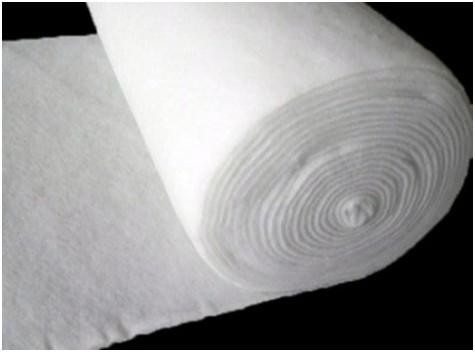
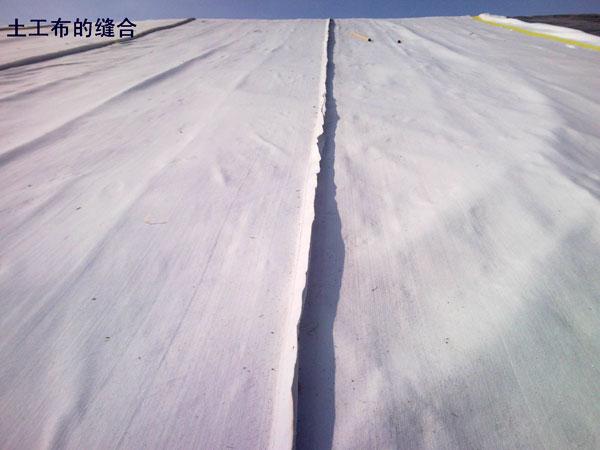
- Q: How do geotextiles contribute to groundwater protection?
- Geotextiles contribute to groundwater protection by acting as a barrier that prevents the movement of contaminants from the surface to the groundwater. They are used in various applications such as erosion control, filtration, and separation, effectively reducing the risk of pollutants reaching the groundwater and preserving its quality.
- Q: What are the specifications for geotextiles in roadways?
- The specifications for geotextiles in roadways usually include factors such as tensile strength, puncture resistance, filtration properties, and durability. Geotextiles used in roadways should have a high tensile strength to withstand the stress and strain exerted by traffic and construction activities. They should also have good puncture resistance to prevent damage from sharp objects. The filtration properties of geotextiles are important for preventing the migration of fine particles and maintaining the stability of the road structure. Additionally, geotextiles should be durable and resistant to degradation caused by UV exposure, chemicals, and biological factors.
- Q: Are geotextiles cost-effective?
- Yes, geotextiles are considered cost-effective due to their durability, longevity, and ability to reduce construction and maintenance costs in various applications such as erosion control, soil stabilization, and drainage.
- Q: Can geotextiles be used in the protection of shoreline structures?
- Yes, geotextiles can be used in the protection of shoreline structures. They are commonly used to stabilize and reinforce soil, prevent erosion, control sedimentation, and provide a barrier against wave action in shoreline projects. Geotextiles provide valuable support and protection to shoreline structures such as revetments, seawalls, and breakwaters by reducing the impact of waves, preventing soil erosion, and enhancing the overall stability of the shoreline.
- Q: Can geotextiles be used in embankment reinforcement?
- Yes, geotextiles can be used in embankment reinforcement. Geotextiles are commonly used in civil engineering projects to improve the stability and performance of embankments. They provide reinforcement by distributing loads and reducing soil erosion, thereby enhancing the overall strength and durability of embankments.
- Q: Now geotextile price quota how?
- 2017 geotextile price cheaper than last year, the current price of raw materials is relatively stable production. Geotextile classification of many, you ask more general, so no way to give you a detailed offer. Different technical requirements are uneven prices, but the overall price has come down, and is now the lowest price since 2017.
- Q: Are geotextiles resistant to insect infestation?
- Yes, geotextiles are generally resistant to insect infestation. The materials used in geotextiles are typically not attractive to insects, making them less susceptible to infestation compared to other types of fabrics or materials.
- Q: What are the different geotextile performance properties?
- Geotextile performance properties can vary depending on the specific application, but some common properties include filtration, separation, drainage, reinforcement, and erosion control.
- Q: How do geotextiles help in reducing the risk of soil liquefaction?
- Geotextiles help in reducing the risk of soil liquefaction by improving the stability and strength of the soil. They act as a barrier between the soil particles, preventing them from shifting and settling during seismic events. Additionally, geotextiles enhance the drainage properties of soil, allowing excess water to flow through and reducing the buildup of pore water pressure, which is a major cause of soil liquefaction.
- Q: Polyester geotextile filter layer sets what the amount
- Polyester filament geotextile Features: Polyester filament geotextile is made by polyester method by spinning acupuncture consolidation directly made, product specifications from 80-800g / m2 arbitrary choice, it is geotechnical engineering and civil engineering In the application of a geosynthetics, polyester filament into a network and consolidation method, the fiber arranged in three-dimensional structure. In addition to good mechanical properties, but also has a good vertical and horizontal drainage performance and good extension properties and high resistance to biological, acid and alkali, anti-aging and other chemical stability. At the same time, it also has a wide pore size range, tortuous pore distribution, excellent permeability and filtration performance. Polyester filament geotextile Uses: water conservancy project dam and slope protection of the filter, channel isolation, seepage; road, rail, airport runway foundation isolation, filter, drainage, slope, retaining wall and road reinforcement, Drainage; Port Engineering soft foundation treatment, beach embankment, harbor wharf and breakwater reinforcement, drainage; polyester filament geotextile has been widely used in the field of infrastructure construction, and gradually applied to a wider range of areas. Geosynthetics are the general term for synthetic materials for civil engineering applications. As a kind of civil engineering material, it is a synthetic polymer (such as plastic, chemical fiber, synthetic rubber, etc.) as raw materials, made of various types of products, placed in the soil, the surface or between the various soil , Play to strengthen or protect the role of soil. "Geosynthetics application of technical specifications" will be divided into geotextile geotextile geotextile, geomembrane, geotextile special materials and geotextile materials, geotextile, fiberglass, geotextile and other types.
Send your message to us
Membrana Geotextil Pet 300 Needle Punched Nonwoven Geotextiles for Railway Construction
- Loading Port:
- Qingdao
- Payment Terms:
- TT OR LC
- Min Order Qty:
- 20000 m²
- Supply Capability:
- 1500000 m²/month
OKorder Service Pledge
OKorder Financial Service
Similar products
Hot products
Hot Searches
Related keywords
